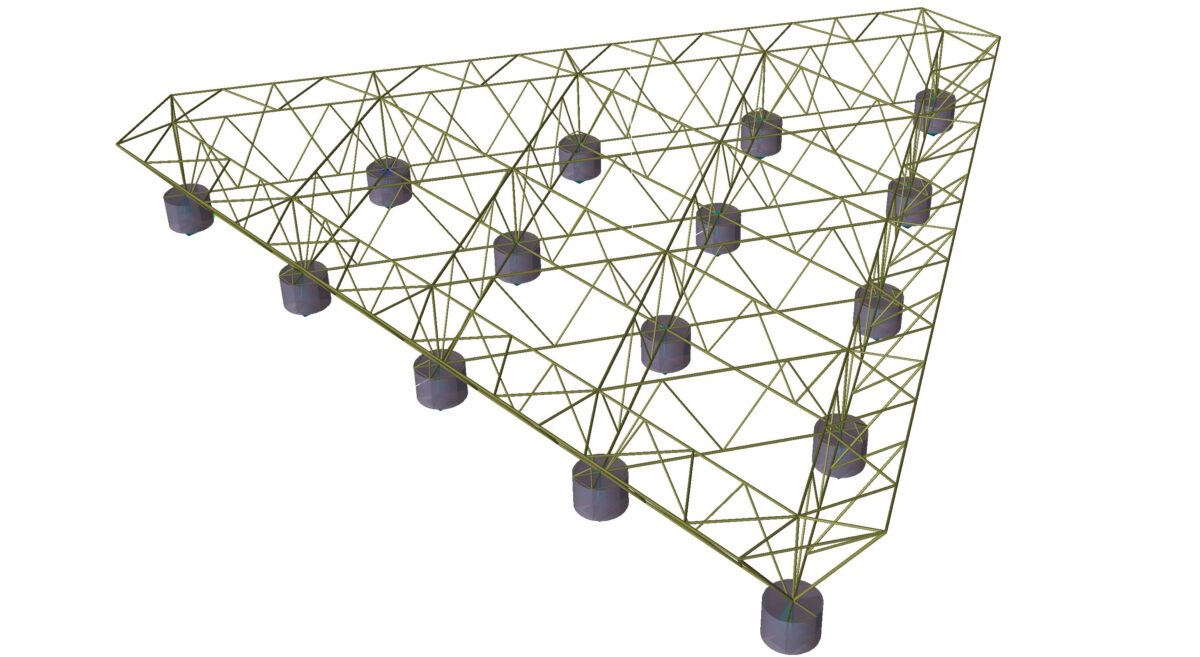Scientists at the Ocean University of China developed a new methodology to identify optimized mooring models for offshore floating photovoltaic systems deployed in ultra-shallow waters.
Their work focused on outlining the numerical modelling of a four-module floating array and six alternative mooring systems.
“In the early stages of our research, this concept has been mainly applied in shallow water environments, where significant tidal fluctuations pose a considerable challenge for mooring system design,” the research's corresponding author, Deqing Zhang, told pv magazine. “In such scenarios, mooring systems risk becoming slack and losing functionality at low tide or may be damaged due to excessive tension at high tide.”
The research team explained that the effectiveness of a mooring system in floating installations depends on the material and geometrical properties of its lines, as well as on their environmental loads and the loads of the upper rigid floaters.
“There are two representative types of mooring configurations: catenary mooring system and taut mooring system,” the academics specified. “The key distinction between these two configurations lies in the manner in which they provide restoring forces, leading to variations in material properties, mooring radius and static shape.”
Catenray mooring systems are usually made of heavy ferrous chains and are characterized by geometric stiffness. Conversely, taut mooring systems are characterized by a “flexible” stiffness, as they usually utilize synthetic fibre rope and float upwards beneath the waterline.
Popular content
The analysis showed that the breaking strength of the taut systems is three times greater than that of catenary mooring lines. Furthermore, the scientists found that taut systems integrating buoys or clumps have the least tension variation across different tide levels.
They also ascertained that the taut systems have a clearer correlation with tidal changes when subject to irregular waves, wind and current. Moreover, catenary mooring systems were found to be more exposed to damage compared to taut mooring systems, at equivalent tidal levels.
“Our comparative analysis of various mooring configurations has shown that taut mooring systems integrated with buoys or clump weights consistently outperform others,” Zhang said. “Therefore, we highly recommend these systems for securing floating photovoltaic arrays in shallow water environments with severe tidal variations, as they provide optimal stability and resilience.”
Their findings are available in the study “Design and comparative analysis of alternative mooring systems for offshore floating photovoltaics arrays in ultra-shallow water with significant tidal range,” published in Ocean Engineering.
This content is protected by copyright and may not be reused. If you want to cooperate with us and would like to reuse some of our content, please contact: editors@pv-magazine.com.



By submitting this form you agree to pv magazine using your data for the purposes of publishing your comment.
Your personal data will only be disclosed or otherwise transmitted to third parties for the purposes of spam filtering or if this is necessary for technical maintenance of the website. Any other transfer to third parties will not take place unless this is justified on the basis of applicable data protection regulations or if pv magazine is legally obliged to do so.
You may revoke this consent at any time with effect for the future, in which case your personal data will be deleted immediately. Otherwise, your data will be deleted if pv magazine has processed your request or the purpose of data storage is fulfilled.
Further information on data privacy can be found in our Data Protection Policy.